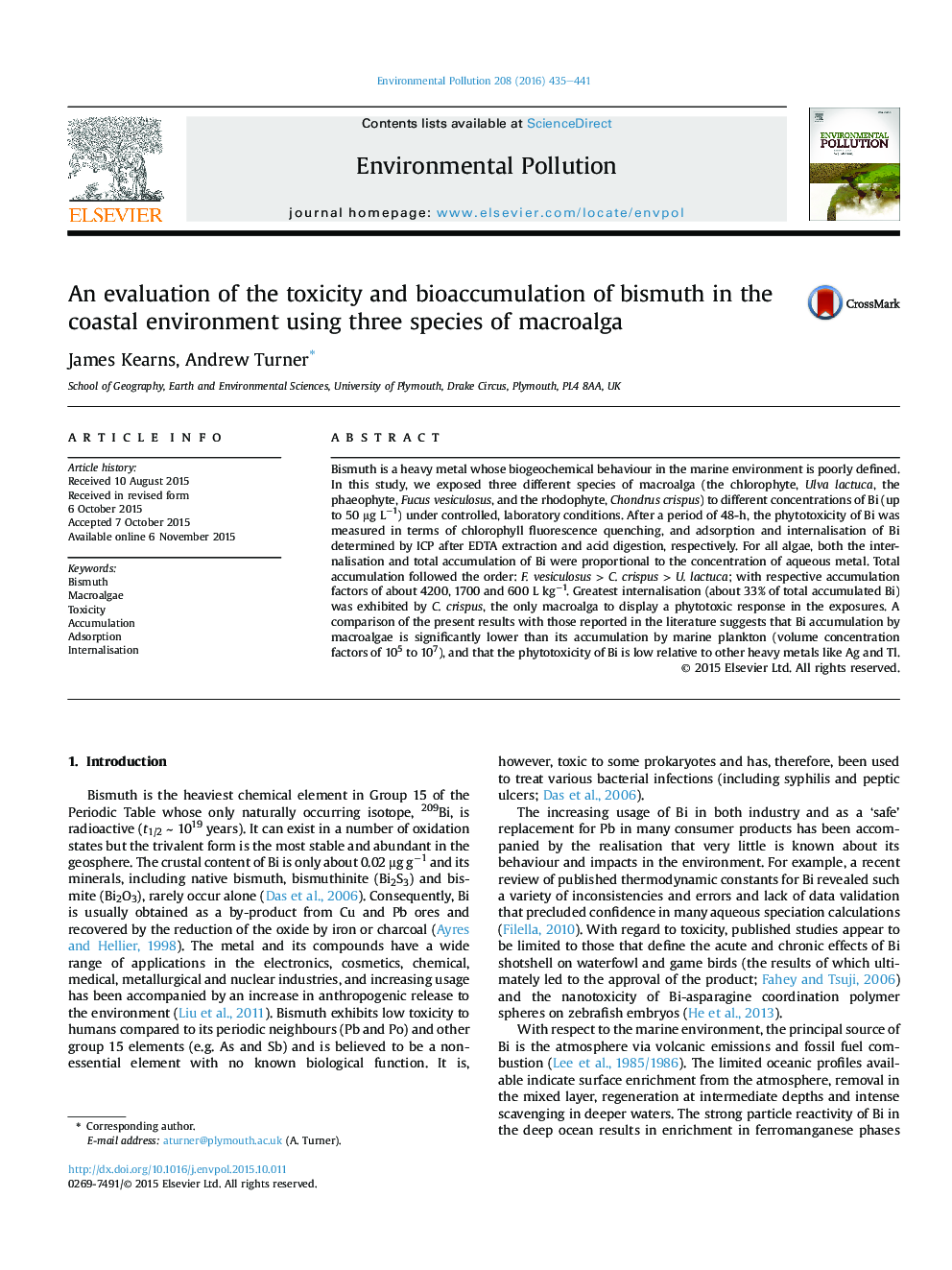| Article ID | Journal | Published Year | Pages | File Type |
|---|---|---|---|---|
| 6316257 | Environmental Pollution | 2016 | 7 Pages |
Abstract
Bismuth is a heavy metal whose biogeochemical behaviour in the marine environment is poorly defined. In this study, we exposed three different species of macroalga (the chlorophyte, Ulva lactuca, the phaeophyte, Fucus vesiculosus, and the rhodophyte, Chondrus crispus) to different concentrations of Bi (up to 50 μg Lâ1) under controlled, laboratory conditions. After a period of 48-h, the phytotoxicity of Bi was measured in terms of chlorophyll fluorescence quenching, and adsorption and internalisation of Bi determined by ICP after EDTA extraction and acid digestion, respectively. For all algae, both the internalisation and total accumulation of Bi were proportional to the concentration of aqueous metal. Total accumulation followed the order: F. vesiculosus > C. crispus > U. lactuca; with respective accumulation factors of about 4200, 1700 and 600 L kgâ1. Greatest internalisation (about 33% of total accumulated Bi) was exhibited by C. crispus, the only macroalga to display a phytotoxic response in the exposures. A comparison of the present results with those reported in the literature suggests that Bi accumulation by macroalgae is significantly lower than its accumulation by marine plankton (volume concentration factors of 105 to 107), and that the phytotoxicity of Bi is low relative to other heavy metals like Ag and Tl.
Related Topics
Life Sciences
Environmental Science
Environmental Chemistry
Authors
James Kearns, Andrew Turner,
